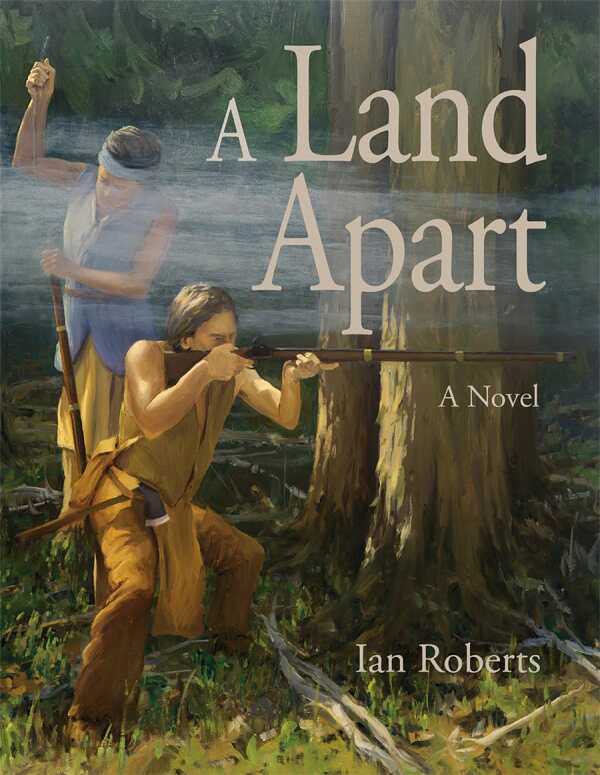A Land Apart
Ian Roberts’s historical novel, A Land Apart, mixes history and art to comment on how technology changes societies.
In New France in 1634, somewhere along the banks of the Great Lakes, Totiri, an Iroquois war chief, trades with English settlers for firearms—some of the first to make it into native hands. The English depart, leaving the French settlers and the more peaceful Wendat tribe to deal with the bloody ramifications.
Enter the hero of the story, Etienne Brulé, who flees the ostentatious court of Louis XIII to find a haven in the wilderness. Brulé witnesses the Jesuits’ quixotic battle to keep the area free of firearms, worrying about what terror that new technology will bring.
Soon, these fears come true, as French expansion plans, driven by the grasping French crown, clash with the Iroquois aggression. The story becomes a race against time. Brulé runs, paddles, and fights his way to defend an ill-fated exploration of the region. Hanging in the balance is the life of Samuel Champlain, whom the Church forces to come along on a mission.
By concentrating on a specific moment of transformation, the novel reveals how starkly the colonists disrupted and forever changed the lives of native peoples. There is little certainty in the story, which is set in a land of shadows where even heroes are revealed to be naive. Roberts exaggerates this feeling with illustrative paintings in black and white that mute the beauty of the scenes and make some things hard to decipher.
A Land Apart raises questions about the origins of violence in America.
Reviewed by
Jeremiah Rood
Disclosure: This article is not an endorsement, but a review. The publisher of this book provided free copies of the book to have their book reviewed by a professional reviewer. No fee was paid by the publisher for this review. Foreword Reviews only recommends books that we love. Foreword Magazine, Inc. is disclosing this in accordance with the Federal Trade Commission’s 16 CFR, Part 255.

